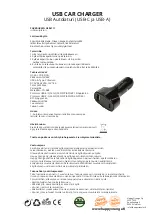
D: Forward position
When the car is moving forward, this position is
normally engaged. At this time, the system will
automatically upshift or downshift according to the
engine load and car speed.
– When the “P” position is engaged, depress
the brake pedal and pull the gearshift lever
down to the B1 or B2 position to engage the
“D” position.
– When the “R” position is engaged, depress
the brake pedal and pull the gearshift lever
down to the B2 position to engage the “D”
position.
– When the “N” position is engaged, depress
the brake pedal (only required when the car
speed is less than or equal to 3km/h) and pull
the gearshift lever down to the B1 or B2
position to engage the “D” position.
– When the “S” position is engaged, move the
gearshift lever to the right to the first stable-
state position to engage the “D” position.
S: Forward position
The “S” position is for sport mode. When this
position is engaged, the transmission will shift into
a lower gear according to the changes in
resistance (such as traction, climbing a long slope,
etc.), and the engine will run at a higher speed to
give more power. The “S” position is mainly used
for driving in pursuit of power, and also for hill
driving, which can avoid frequent gear changes.
– When the “D” position is engaged (if the
gearshift lever is in other position, turn it to
the “D” position), move the gearshift lever to
the left to the “S” position to engage this
position.
When the car enters this mode, move the gearshift
lever up or down to upshift/downshift. At this time,
the transmission enters manual mode.
Economy mode
When the car enters this mode, both the
transmission control unit and the A/C system will
adopt the economic strategy.
– When the engine start/stop button is in “ON”
position and a position other than “P” position
is engaged, press the “ECO” mode button to
enter the economy mode.
131
5. Driving Guide
















































